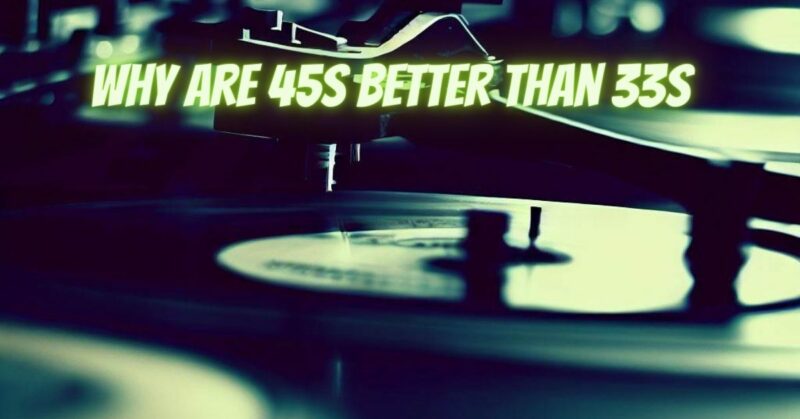Vinyl records have long captivated music enthusiasts with their warm, authentic sound and nostalgic charm. Among the various vinyl formats, two prominent speeds stand out – 45 RPM (Revolutions Per Minute) and 33 1/3 RPM. The debate over which is better, 45s or 33s, has sparked numerous discussions among audiophiles and collectors. However, the truth is that neither format is inherently superior to the other; instead, they each offer distinct advantages depending on individual preferences and musical contexts. In this article, we’ll debunk the myth and shed light on the differences between 45s and 33s to understand their unique qualities and appeal.
- Speed and Duration
The primary difference between 45s and 33s is the rotational speed and corresponding duration of the music they can hold. 45 RPM records typically contain one song per side, making them ideal for singles or hit tracks. As a result, the duration of each side is limited, usually ranging from three to five minutes per track. On the other hand, 33 1/3 RPM records can hold more music due to their slower speed, typically offering around 20 to 25 minutes per side. This makes them well-suited for albums or longer pieces of music.
- Sound Quality
The sound quality of vinyl records is influenced by various factors, including mastering, pressing quality, and the condition of the record itself. The rotational speed (45 or 33 RPM) is not a direct determinant of sound quality. Both formats can provide excellent audio fidelity when produced and handled properly. The key to achieving high-quality sound lies in factors such as the mastering process, the quality of the vinyl material, and the condition of the record player and stylus.
- Sound Characteristics
While the speed itself does not dictate sound quality, some collectors argue that 45 RPM records can offer slightly better audio fidelity due to the larger groove size and increased linear velocity compared to 33 RPM records. As a result, some audiophiles believe that 45s can provide greater detail and a wider dynamic range, particularly in the high frequencies. However, the difference in sound characteristics is often subtle and may not be noticeable to the average listener, especially when considering other factors that influence sound quality.
- Collectibility and Rarity
From a collector’s perspective, 45 RPM records can hold higher value, especially for rare or sought-after singles. Due to their shorter duration and focus on hit songs, 45s were more commonly sold and enjoyed during the peak of vinyl’s popularity in the mid-20th century. As a result, certain rare 45 RPM records can be highly collectible and fetch higher prices in the vinyl market. 33 RPM records, being more prevalent for albums and longer tracks, may not hold the same level of collectibility but can still be treasured by audiophiles and enthusiasts.
In conclusion, there is no inherent superiority of 45 RPM or 33 RPM vinyl records over each other in terms of sound quality. The choice between 45s and 33s ultimately comes down to personal preferences, musical content, and collectibility factors. While 45 RPM records are well-suited for singles and can provide a slightly different sound character, 33 1/3 RPM records are ideal for full-length albums and extended listening experiences. As both formats continue to charm vinyl enthusiasts worldwide, it’s essential to appreciate the unique qualities that each brings to the vinyl listening experience, making them both cherished and timeless formats for music lovers of all generations.


